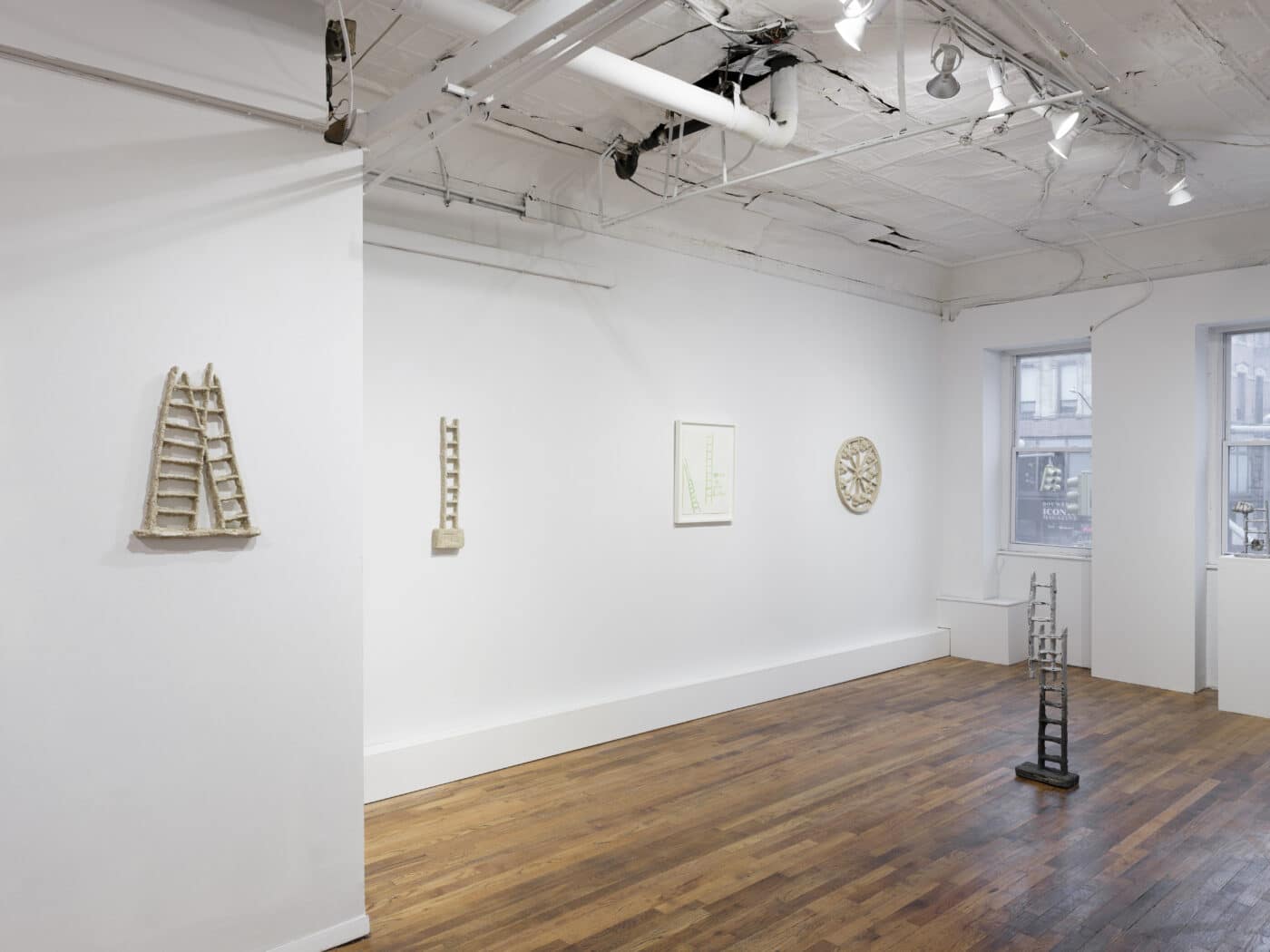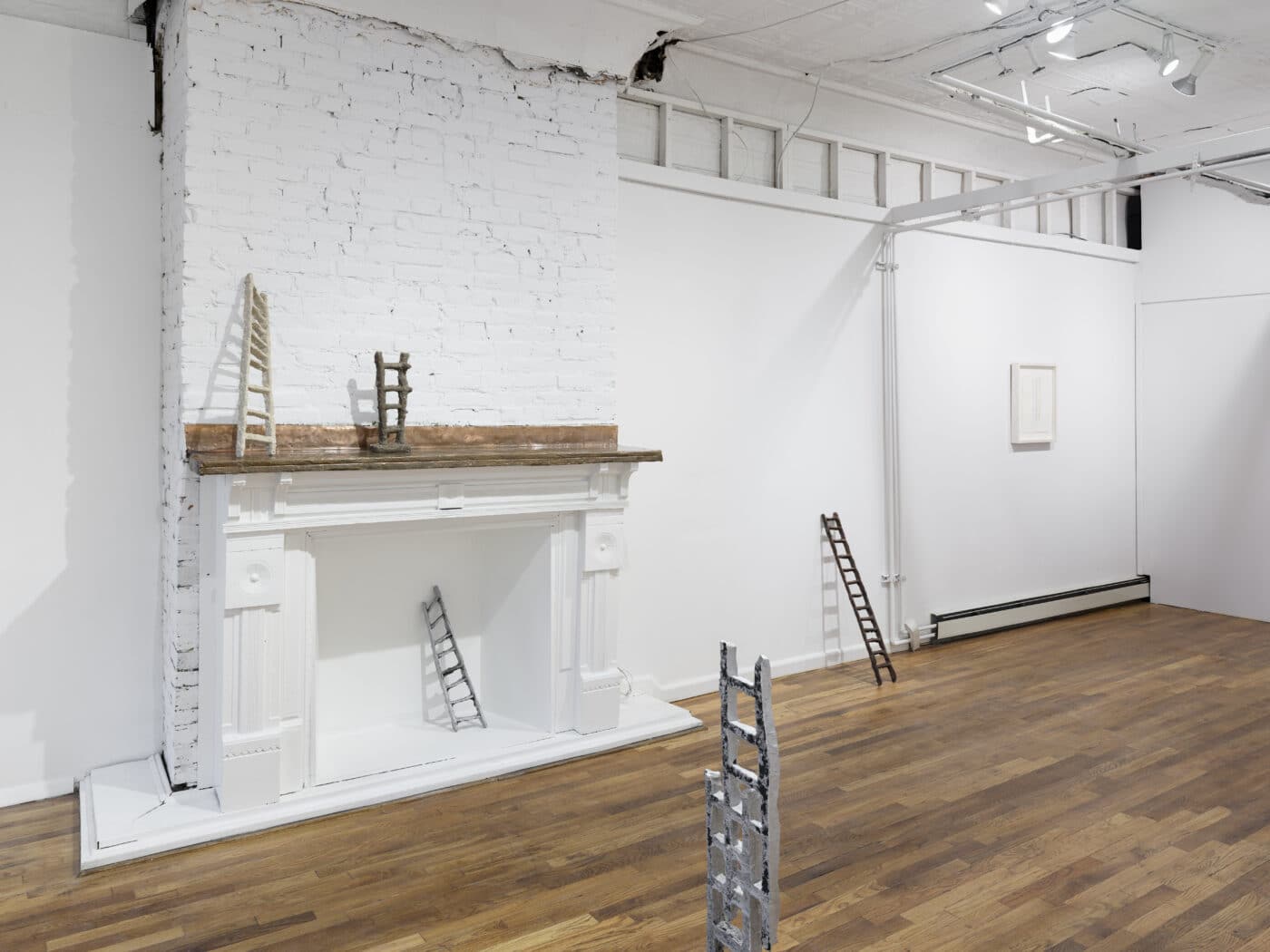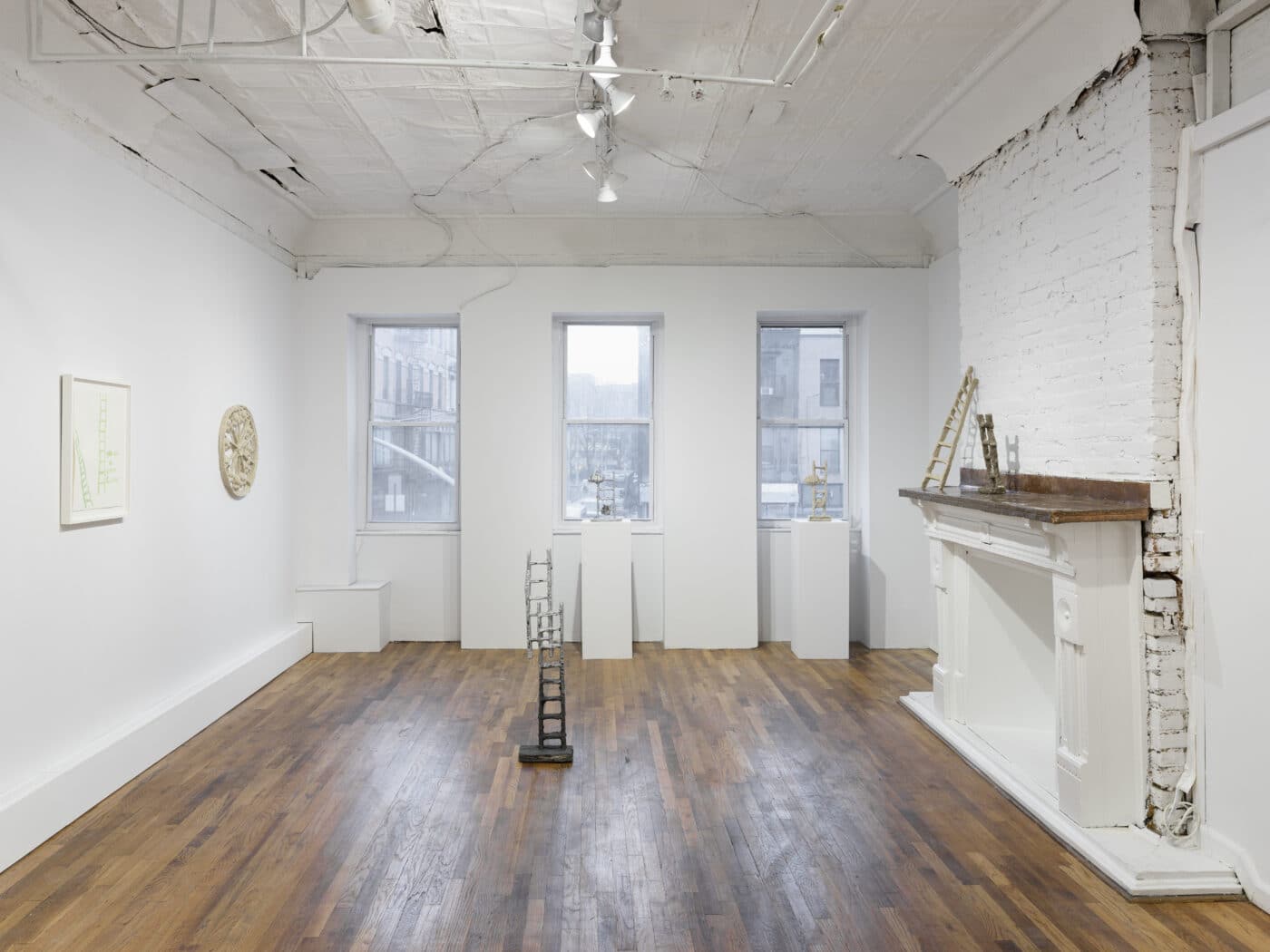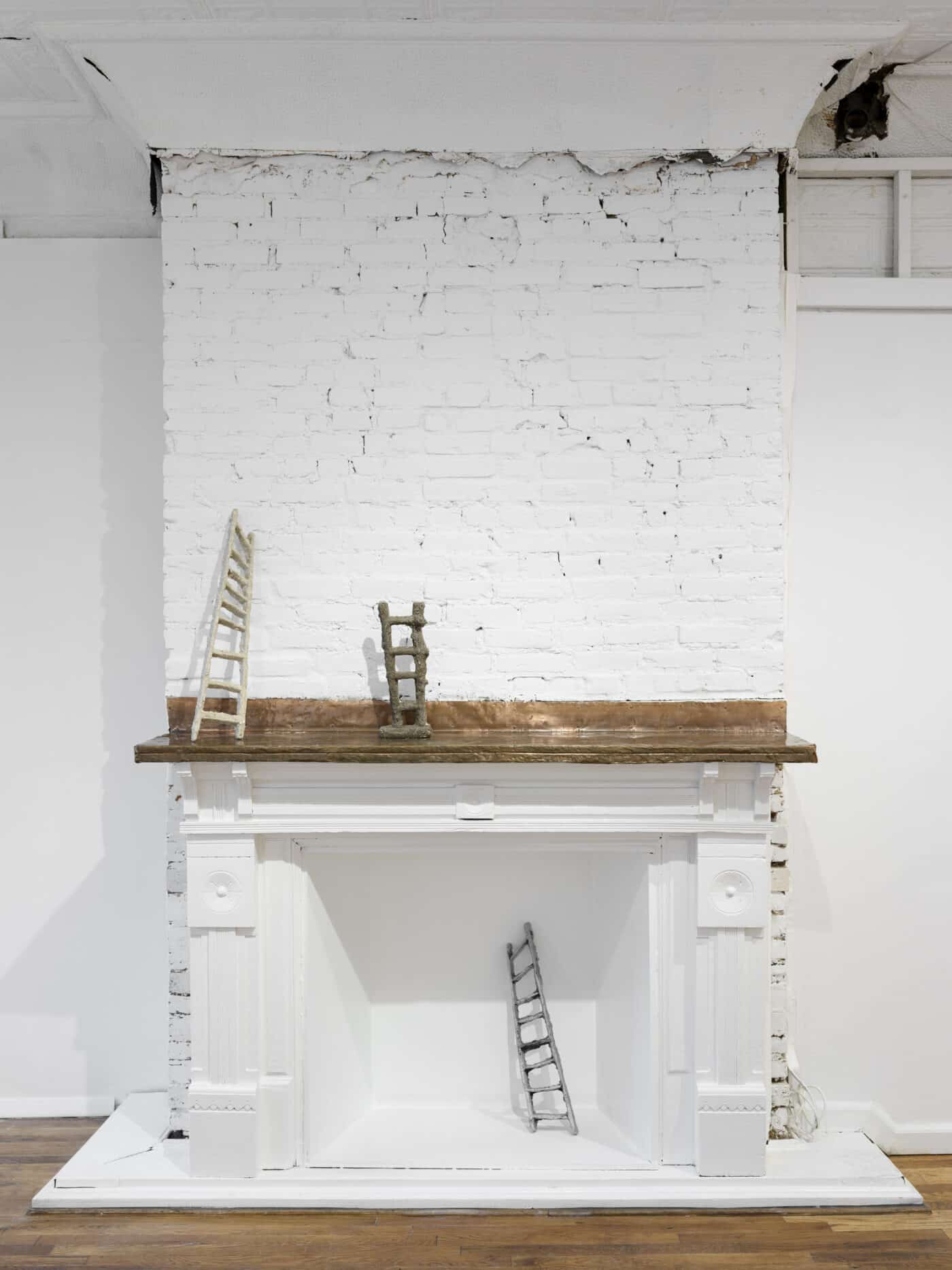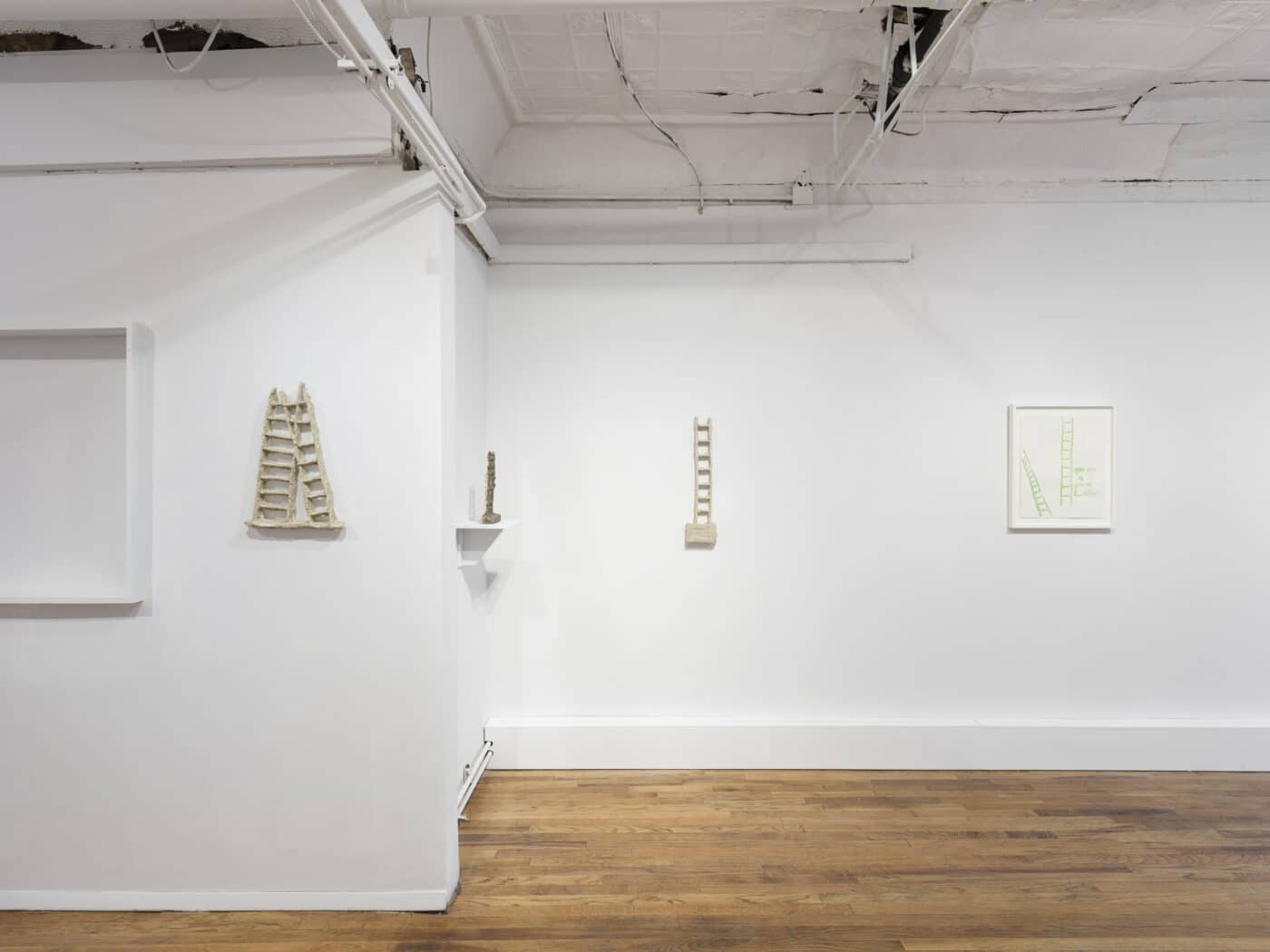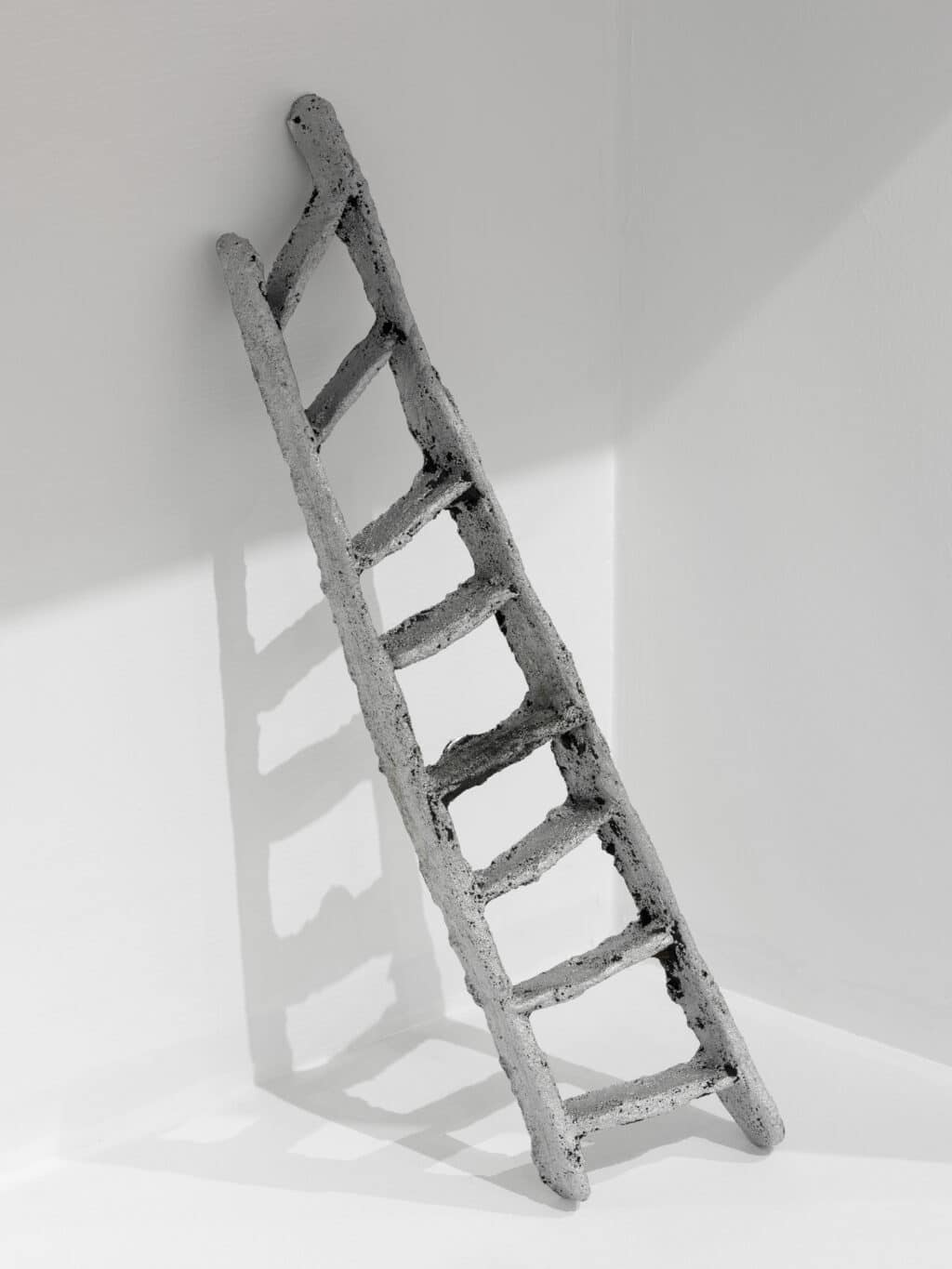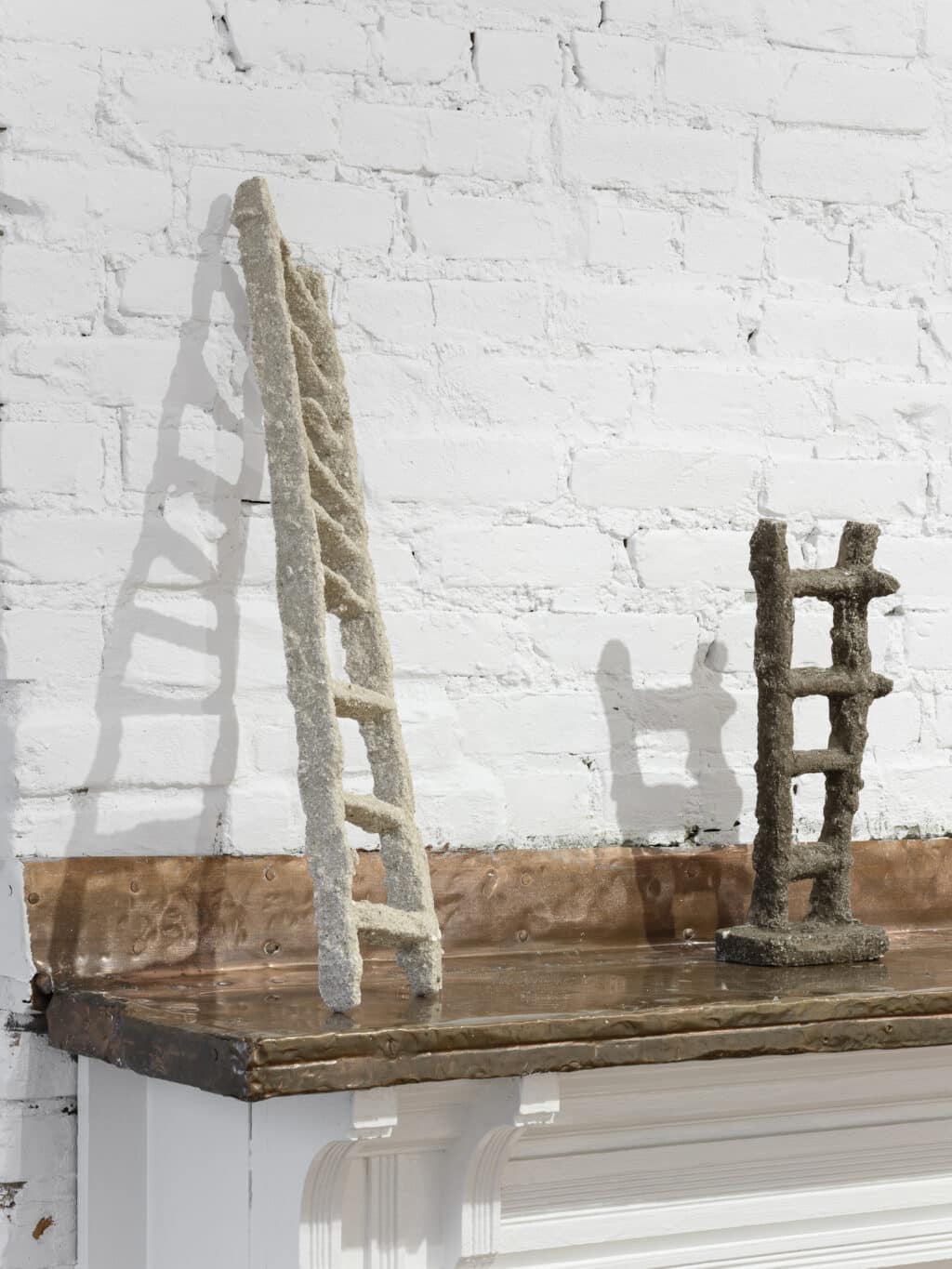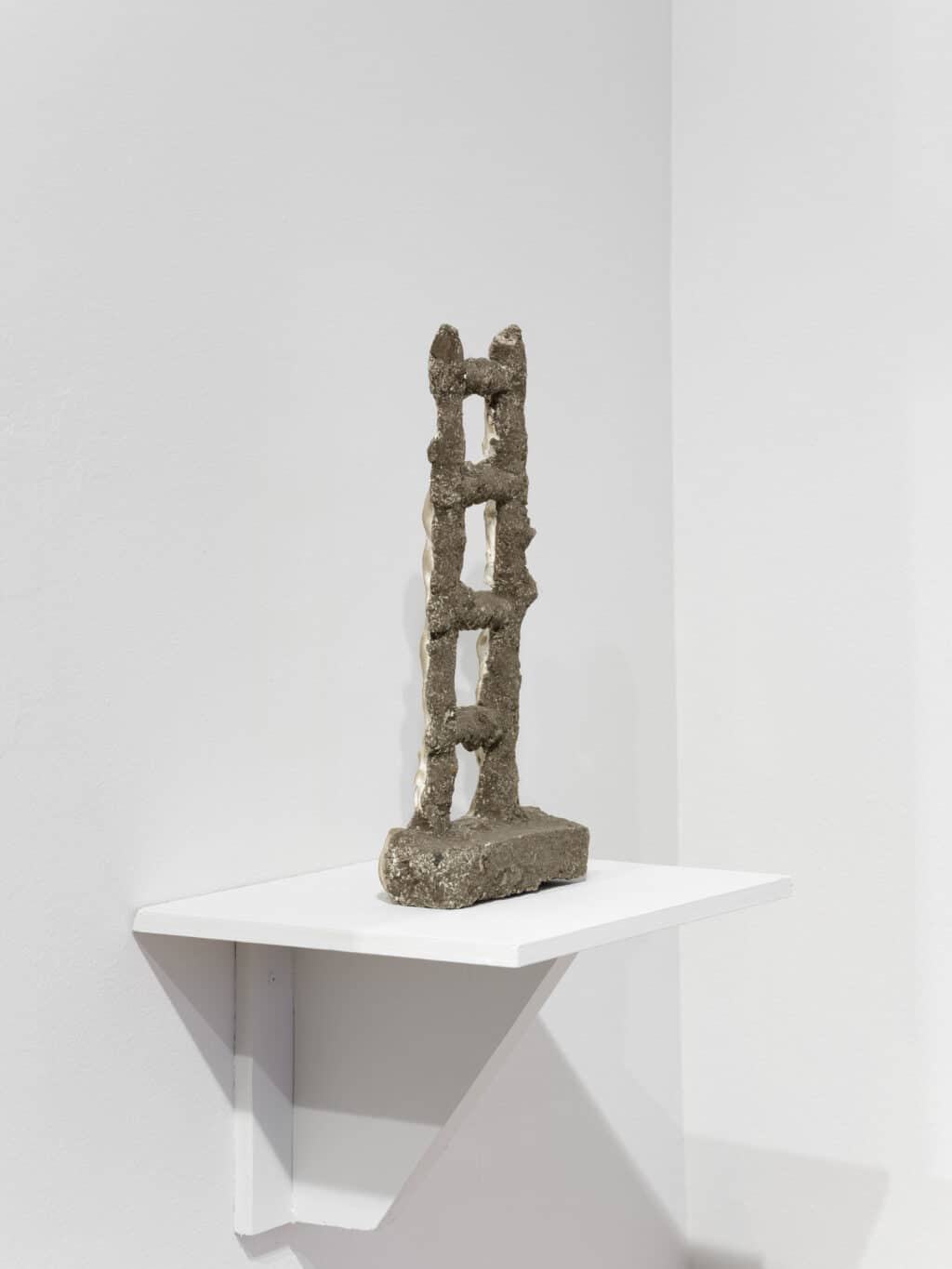Corwin has produced a body of work composed of aluminum, bronze, plaster, dirt, and other rudimentary building blocks of earth and architecture. Recalling biblical allegories and countless parables, Corwin’s ladders dotting the 208 Bowery gallery are a culmination of years of work, most recently at his New Art Dealers Alliance summer residency on Governors Island, and a bronze pour in Pittsburgh. Green Ladder has an accompanying publication complete with text by Darryl Pinckney.
William’s Ladders
Darryl Pinckney
The Bible tells us to put a stone for a pillow under our heads and we will dream of ladders. We will see angels hard at work, going up, coming down, but when we wake, we will fear heaven as exile.
And up this ladder the soul must go
Step by step from the valley below
That is Ella Wheeler Wilcox, one of those American names neither Google nor Amazon is prepared to let go. We can’t borrow anyone else’s ladder, she warned, and we can’t lend ours to others. We can’t throw ours away or buy a new one either.
In useless effort, then, waste no time;
Rebuild your ladder and climb, climb.
There she goes, made a fool of by her own positive thinking. She was cheating. She believed in the promise of the return ticket, in her power to talk to the dead. But when the time came, Mr. Wilcox did not come back to her; he whispered no message from other side. Mr. Wilcox failed to send her word, off on his one-way adventure. It wasn’t as though he’d seen her through the window and changed his mind about passing through walls. ‘Smile when things go wrong,’ she wrote, back when she was happy. ‘Weep and you weep alone,’ she wrote, back when they sat by new electric lights together and thought on their weird philosophy. Fuck that, she might have said before throwing herself to the floor. The whole town heard the unanswered widow’s gnashing.
Someone is sleeping there, at the bottom of that ladder. The cloud lingers, however violent the wind. A ladder is a flight of stairs that has been places and has stories to tell but do let it rest. The wall is nicer than the floor. Someone remains asleep. The ladder is mercy, rescue, goodness, courage, strength. It is sanctified by craft. It is as steadfast as a horse. The ladder is fortification, from ground to wall, wall to wall, an episode of siege, defense, attack, safety. Instrument of salvation, weapon of war, the ladder turns and smiles. Constantinople will fall. The Sultan will rush the empire’s walls with a multitude of scaling ladders, every one of them a bridge between heaven and earth, just as Mrs. Wilcox learned to preach.
Tool of ascent, the steps keep score. The spaces in between could be mysteries, but they want to be what they are, framed and in need of a wall to lean against for definition, for metaphysical rebuke to both bloody conquest and lace-collar spirituality. After so much strife with Jacob’s children, the lad- der is still a path. To have vertigo is to know wisdom. To get out of the chump’s bargain with heaven, come back down before the air thins, come down step by step, or skip a few steps, or several steps, hell, slide like a firefighter who’s wrapped the shit up. It is the only chance at changing destiny. Climb back down to that hilltop, or into that valley, before it’s too late for do-overs.
What a lonely story the Immovable Ladder on the Church of the Holy Sepulchre is, rained on, colorless, untouched in three hundred years. It is a story interrupted forever, a five-step ladder of wood and nails placed on a ledge below a window, yet no doctrine can say what for. Someone was rescued that night or two Coptic priests escaped their faith together. To get in or to break out, to be either captive or free, up in heaven or carried by angels back down to the distress of earth. The ladder is full of judgment.
Mesopotamian or Judean oil, Cappadocian or Pontusian oil got poured over William’s ladders that were then baked. They are not precise and hard-edged in construction; one drawing in charcoal shows a ladder that looks splintered, luckily preserved, long forgotten in a chateau passageway. The ladders can seem ancient, dug up, found, like relics. The legs are not even. One step is bro- ken. They are large and small. They were children’s toys in Pompeii that now sit on a mantel. They were crude steps for a merchant in Aleppo. They are encrust- ed, dusty colored, or silvery, or dung-green brown, ready for anthropological conversation. There is nothing martial about them. The memory they convey is not utilitarian.
They are ladder forms as sculpture, sometimes two rough ladders tethered together or welded together, or ladders that seem big are free stand- ing, crookedly, on thick bases, recalling Jacob’s heritage stuck into the ground. Two small ladders not yet intersecting are placed among ladder parts or stone debris at or as the base. The leaning ladder twists in anticipation of touching a ladder solid on its own base. Were the two pieces to meet, it would be at the bottom of a watercolor of two ladders diverging in reverse directions from the two ladder pieces stationed below. “You are a green ladder,” the writing on the paper says placed behind the sculpture says.
The ladders hang on a wall, they stand upright, they are suspended, they lean, they cast shadows, they go up and down, fragile, lucky, they go right up and come back down, they ascend and descend. We can climb with knees out like tree frogs or on an incline like cats, the bargain, the design. They answer the unasked for question about mortality. They answer a need. They look like survivors, like survival. The ladders are beautiful.

